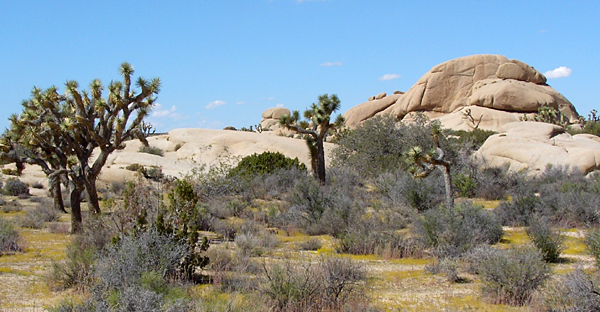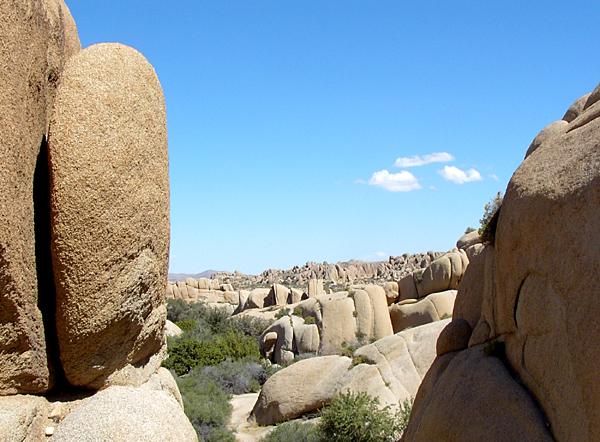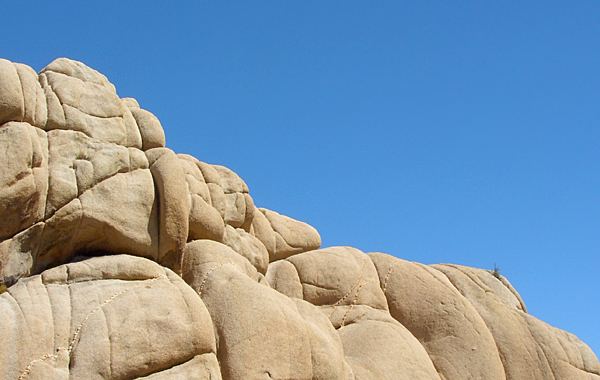Our one scheduled excursion for our California mini-vacation was a trip to Joshua Tree National Park. Both of us have visited this phenomenal park, but we’d never been there together. So, we packed lots of water and drove 140 miles inland to the desert.
One great feature of the California ecology is that, even if it’s hazy on the coast, you can count on blue skies and infernal heat in the interior. We were not disappointed. This was the quintessential desert day. Joshua Tree was all sand, stone, sun, and super-cool flora. There weren’t many birds, though. We drove hundreds of miles through chollo cactus, ocotillo, yucca, and of course, Joshua trees. From the cooler heights of the Mojave Desert to the rocky flats of the Colorado Desert, we searched them out. We even tried Cottonwood Springs, the one oasis guaranteed to attract thirsty flyers. But try as we might, the birds were not there.
I am exaggerating a little bit. We were taunted by the call of Canyon Wrens everywhere we went. We also saw lots of Common Raven soaring high above. We only had birding success in one spot, the aptly named Hidden Valley. Here, we saw a very elusive Bushtit and female Rufous Hummingbirds and Summer Tanagers. The only other species we spotted after that was the Western Scrub-jay, which was actually pretty common. We had the hardest time identifying them, though, because the inland variety is much more drab than the stunning blue coastal types.
As an added bonus, while writing this trip report, I discovered that we added yet another life bird. The easiest identification in Joshua Tree was what we thought was an Eastern (Rufous-sided) Towhee. We’ve seen these before, and the bird we spotted matched the picture in our National Audubon Society Field Guide to North American Birds: Western Region perfectly, white wing bars and all. Imagine my surprise when I discovered that the Eastern Towhee doesn’t have white wing bars or spots on its back. Those are the markings of a Spotted Towhee. Why didn’t we catch this at first? The towhee of the east was formerly conspecific with its spotted brethren. It was relatively recently that the two were,as they say in the social sciences, individuated. Our field guide has not kept up with the blistering pace of AOU taxonomic modifications. Time for a new edition, wouldn’t you say?
So it was hot and there weren’t a ton of birds. Don’t think for a second that we didn’t enjoy the trip. Joshua Tree’s landscape is unlike anything else you’ve ever seen in America, perhaps the world. But timing is everything in this world. At over 100 degrees, it was just too hot out there, even for desert birds. Our advice is to go to Joshua Tree any time you get the chance, but if you have any control over the scenario, avoid summer!














Leave a Comment